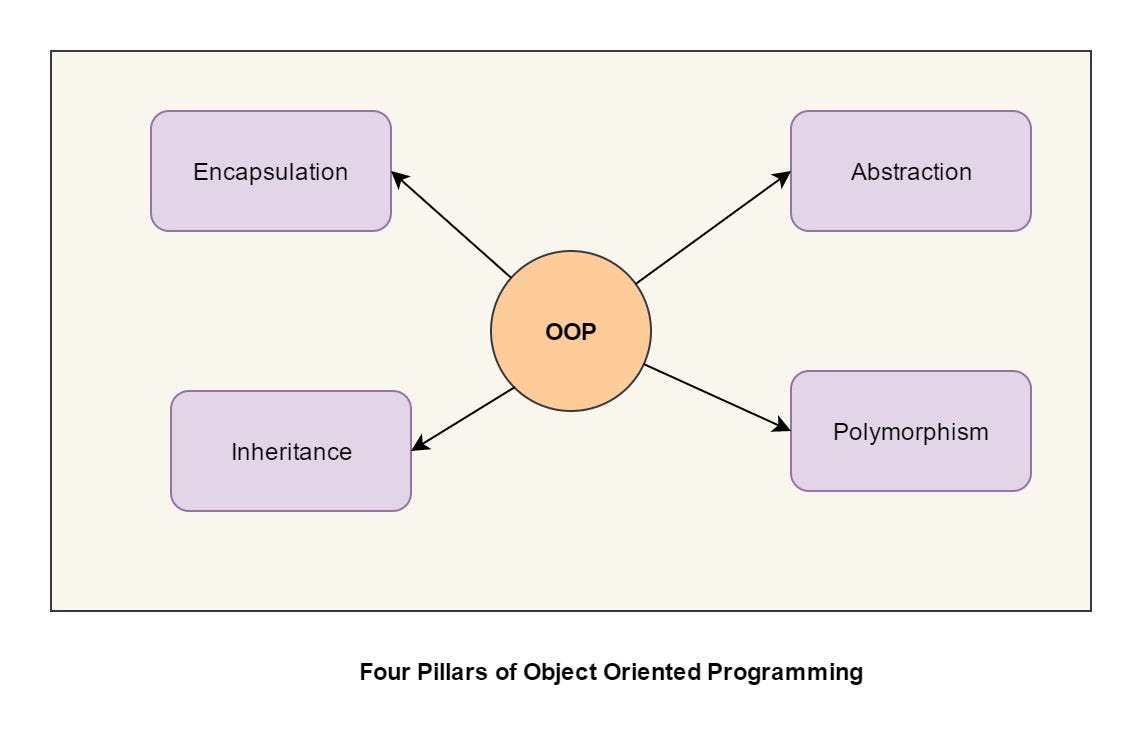A
Akash Das
June 18, 2025•2 views
Master Object-Oriented Programming (OOP): A Complete Guide
Published 6/18/2025•3 min read min read
#object-oriented-programming#oop#programming-paradigm#software-design#c++#java

Object-Oriented Programming (OOP) is a paradigm that organizes software design around data, or objects, rather than functions and logic. It is widely used in modern software development to build scalable, modular, and reusable applications.
🧱 Core Concepts of OOP
OOP is built on four main principles:
1. Encapsulation
Encapsulation is the process of bundling data and methods that operate on that data within a single unit, typically a class. It helps in data hiding and abstraction.
class BankAccount {
private:
double balance;
public:
BankAccount(double initial) {
balance = initial;
}
void deposit(double amount) {
balance += amount;
}
double getBalance() {
return balance;
}
};🔐 Encapsulation ensures that internal object details are hidden from the outside world.
2. Abstraction
Abstraction means exposing only the essential features of an object while hiding the unnecessary details. This improves code readability and maintainability.
class Vehicle {
public:
virtual void startEngine() = 0; // Abstract method
};💡 You interact with a car without needing to know the complexity of the engine.
3. Inheritance
Inheritance allows a class (child) to inherit properties and behaviors from another class (parent). This promotes code reuse.
class Animal {
public:
void eat() {
cout << "Eating..." << endl;
}
};
class Dog : public Animal {
public:
void bark() {
cout << "Barking..." << endl;
}
};🧬 Inheritance creates an "is-a" relationship.
4. Polymorphism
Polymorphism allows objects of different classes to be treated as objects of a common superclass, particularly when they override shared methods.
class Animal {
public:
virtual void speak() {
cout << "Animal speaks" << endl;
}
};
class Cat : public Animal {
public:
void speak() override {
cout << "Meow" << endl;
}
};🔁 Same method name, different behaviors depending on the object.
🏗️ Benefits of OOP
- 🔄 Reusability: Write once, use many times through inheritance.
- 🧩 Modularity: Divide the application into logical parts (classes).
- 🛠️ Maintainability: Easy to debug, update, and extend.
- 🧠 Intuitiveness: Mimics real-world objects, making design more natural.
🧪 Real-Life Example
Consider a blogging platform:
Userclass: represents a user with attributes likename,email.Postclass: holdstitle,content,author.Commentclass: hastext,user, andpost.
Each of these entities encapsulates relevant data and behavior, inherits common features (e.g., timestamps), and interacts through abstract interfaces.
🔚 Conclusion
Object-Oriented Programming is a powerful methodology that facilitates robust software design. Mastery of classes, objects, and the four pillars—encapsulation, abstraction, inheritance, and polymorphism—is essential for building modern applications in languages like C++, Java, Python, and more.
Comments (4)
A
Akash Das@akashd2664·6 months ago
feedback
A
Akash Das@akashd2664·6 months ago
pls
A
Akash Das@akashd2664·6 months ago
<3
A
Akash Das@dasakash.edu·6 months ago
gr8